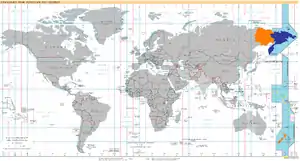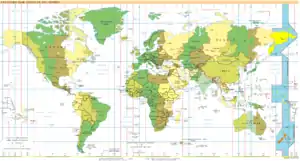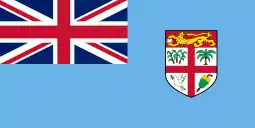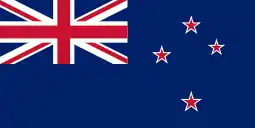UTC+12:00
UTC+12:00 is an identifier for a time offset from UTC of +12:00.
| UTC+12:00 | |
|---|---|
| time zone | |
 World map with the time zone highlighted | |
| UTC offset | |
| UTC | UTC+12:00 |
| Current time | |
| 08:00, 6 February 2021 UTC+12:00 [refresh] | |
| Central meridian | |
| 180 degrees | |
| Date-time group | |
| M | |

UTC+12:00 in 2010: blue (December), orange (June), yellow (all year round), light blue (sea areas)
.svg.png.webp)
| KALT | Kaliningrad Time | UTC+2 | (MSK−1) | |
| MSK | Moscow Time | UTC+3 | (MSK±0) | |
| SAMT | Samara Time | UTC+4 | (MSK+1) | |
| YEKT | Yekaterinburg Time | UTC+5 | (MSK+2) | |
| OMST | Omsk Time | UTC+6 | (MSK+3) | |
| KRAT | Krasnoyarsk Time | UTC+7 | (MSK+4) | |
| IRKT | Irkutsk Time | UTC+8 | (MSK+5) | |
| YAKT | Yakutsk Time | UTC+9 | (MSK+6) | |
| VLAT | Vladivostok Time | UTC+10 | (MSK+7) | |
| MAGT | Magadan Time | UTC+11 | (MSK+8) | |
| PETT | Kamchatka Time | UTC+12 | (MSK+9) |
As standard time (Southern Hemisphere winter)
Principal cities: Auckland, Suva
Oceania
 Fiji
Fiji New Zealand (except Chatham Islands) – New Zealand Standard Time
New Zealand (except Chatham Islands) – New Zealand Standard Time
Antarctica
- Some bases in Antarctica, including McMurdo and South Pole. See also: Time in Antarctica.
As daylight saving time (Southern Hemisphere summer)
Historical changes
Kwajalein Atoll, in the Marshall Islands, advanced 24 hours to the Eastern Hemisphere side of the International Date Line by skipping August 21, 1993.[4]
References
- "Russia Time Zones – Russia Current Times". TimeTemperature.com. Retrieved 20 November 2016.
- "Time Zone: UTC +12". Time Zones and contained Regions / Areas. WorldTimeZone.com. Retrieved 26 August 2012.
- Hardgrave, Gary (3 September 2015). "Norfolk Island standard time changes 4 October 2015" (Press release). Administrator of Norfolk Island. Retrieved 4 October 2015.
- "In Marshall Islands, Friday Is Followed by Sunday". New York Times. Associated Press. 22 August 1993. Retrieved 20 January 2019.
This article is issued from Wikipedia. The text is licensed under Creative Commons - Attribution - Sharealike. Additional terms may apply for the media files.